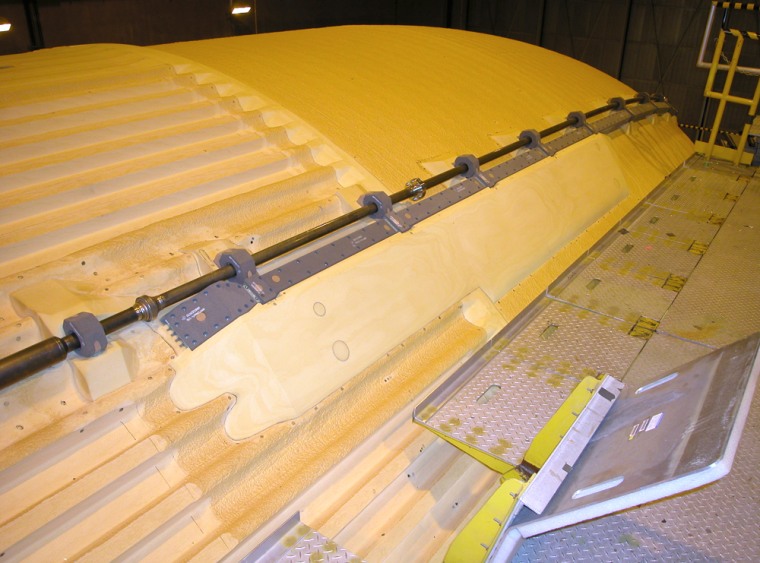NASA plans to change the space shuttle’s external fuel tank again, this time removing a troublesome section of protective foam that broke off during the launch of Discovery last July, the space agency said Thursday.
The removal of more foam from the tank and further testing to find the root cause of cracks in the foam could lead to a longer delay until the next shuttle flight, tentatively set for May. But NASA official Bill Gerstenmaier, who is leading the investigation into the foam loss, said that’s not necessarily the case.
The targeted foam section protects a cable tray that runs along the tank. “We think that’s the best thing to do, just take it off,” Gerstenmaier said.
NASA had redesigned the fuel tank after a large piece of insulating foam hit the wing of the shuttle Columbia in 2003, sparking the disaster that killed seven astronauts. The shuttle fleet was grounded after that, and again after Discovery’s launch last July, when a smaller piece of foam broke off that shuttle’s tank despite the redesign.
Discovery also lost other pieces of foam in four other areas, including the same spot where a large chunk came loose during Columbia’s liftoff.
Still a chance for May
The removal of the large foam section doesn’t require a redesign of the tank’s structure, Gerstenmaier said, meaning the chances of a May launch aren’t necessarily in jeopardy.
Three members of the Columbia accident board with technical expertise couldn’t be reached for comment about NASA’s latest plans.
Engineers want to test the tank in a wind tunnel to see if there are any problems with removing the foam section, known as a protuberance air load, or PAL, ramp. They need to further analyze what is causing the cracks when two layers of foam on the tank are exposed to chilling temperatures during fueling with supercold hydrogen.
Cost-saving measures
NASA is very aware of the money spent on returning the shuttle to flight, Gerstenmaier said, and has taken some cost-saving measures, such as dropping some research on repairing the shuttles’ thermal tiles that aren’t as far along as other techniques.
The space agency needs to fly its aging shuttles 19 more times to finish construction of the international space station before the shuttle fleet is retired in 2010.
“The focus has got to be on understanding the cracking phenomenon and working out an engineering solution, and then that will drive us to what we think the right period is for launch,” Gerstenmaier said. “We don’t need to have a flight this spring to make the 19 flights.”
